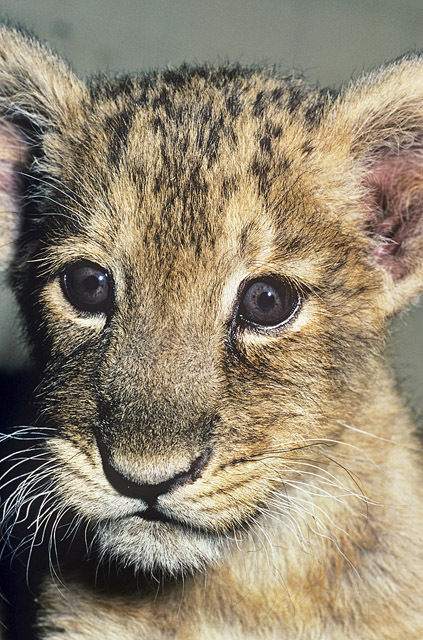The Asiatic lions of India finally get a second home!
In a landmark judgement last week, the Supreme Court of India ruled in favour of translocating lions from the Gir National Park in the state of Gujarat to the Kuno Palpur Wildlife Sanctuary in the state of Madhya Pradesh. The court directed the Union Ministry of Environment and Forests (MoEF) to take urgent steps for translocation of a small number of lions to Kuno from Gir within the next six months.
Once widespread in South-West Asia and India, the Asiatic lion (Panthera leo persica) is now confined only to the Gir and nearby forests in Gujarat. The lion population is stable, thanks to the decades of committed effort by the Gujarat Forest Department and the state government. However, the population is still dangerously small with only about 175 mature individuals (350 individuals in total, including young and sub-adults).
Asiatic lion cub (Panthera leo persica) © David Lawson / WWF-UK
Such a small population, confined to one geographical area, puts the lions at a serious risk of being affected by a killer epidemic disease. The threats are all too real. In perhaps one of the best documented cases, in 1993-94, Canine Distemper Virus, spread from domestic dogs to African lions in Serengeti National Park in Tanzania, killing over a 1000 Lions within six months. To avoid such a scenario, the only prudent course is to establish another population of the Asiatic lions by reintroducing them to a geographically separate part of its historical range.
A proposal to translocate some lions from Gujarat to Kuno, which was part of the historical range of the lion in India, was long pending. However, the state government of Gujarat had been strongly opposed to such a move on grounds such as holding on to the distinction of being the last and only home for the Asiatic lions. Strong cultural attachment and pride in their unique heritage, through the decades, has no doubt played a major role in survival of these lions in Gujarat. However, opposition to the establishment of a ‘second home’ of lions can only harm the species in the long run.
The court, taking an enlightened view, said in its order, “No state, organization or person can claim ownership or possession over wild animals in the forest. Animals in the wild are properties of the nation for which no state can claim ownership and the state’s duty is to protect wildlife and conserve it.”
While ordering the translocation of lions, the court also recognized the grave risk of epidemics by citing the Serengeti case. It said that compared to Serengeti, the lion population in Gir was concentrated in a much smaller area and a similar disease could play havoc with the population of the endangered species.
WWF-India played a role in the current order as the case of the lion translocation filed by another NGO in 2006 was clubbed with an original case filed by WWF-India in 1994 on National Parks and Sanctuaries, which ultimately resulted in this ground breaking order.
The court’s decision regarding translocation of some Asiatic lions to a part of their former home is a welcome development. It brings a new glimmer of hope for these imperiled lions and will be a significant first step in ensuring the long term survival of these charismatic carnivores.


